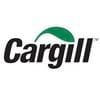Evolution of PRRS prevalence and evaluation of circulating PRRS strains based on ORF-5 in the Netherlands.
Published: March 28, 2025
Source : V. Geurts 1, S. Agten 1,* / 1 MSD-AH Intervet Nederland BV, Boxmeer, Netherlands.
Summary
Keywords: prevalence, PRRS, qPCR
Introduction:
MSD-AH`s ResPig® offers the opportunity to investigate the PRRS status via cross-sectional blood sampling of gilts, sows, weaners and nursery pigs, and saliva testing (via PCR) of two animal groups every six months. PRRS PCR results of weaners can give an indication of the PRRS stability of the sow herd at the time of sampling. PCR results of the oldest nursery pigs provide information about the status of pigs entering the finishing units/farms. In addition, positive PCR test results can be sequenced if requested. The aim of this study was to investigate the 2015 PRRS prevalence in Dutch farms and their ORF-5 sequence and compare the results with those of the previous year.
Materials and Methods:
In 2015, 80 ResPig® investigations with saliva samples coming from weaners and 10 week old piglets were tested. Saliva samples from each group were analyzed via qPCR and then classified as negative or positive. Per veterinarians’ request, 13 positive PCR samples were ORF-5 sequenced (IVD Hannover). PRRSv farm prevalence of weaners and oldest nursery pigs was calculated and compared with the results of 2014
Results:
The prevalence of PRRS at weaning was 15% (12/80) versus 14% in 2014. The prevalence of PRRS at the end of the nursery period totaled 35% (28/80) versus 36% in 2014. More specific investigations indicated that 32% (22/68) of investigations had PRRSv-negative weaned piglets but PRRSv positive nursery pigs
Thirteen (13) positive PCR results were sequenced. The ORF-5 sequence of positive saliva samples varied from 86% to > 98% homology with the Lelystad strain: 86% (1), 87% (3), 88% (1), 92% (1), 93% (1), 94% (1), 96% (1), DV (4). The DV-strain (vaccine Porcilis® PRRS) was only isolated from Porcilis PRRS vaccinating farms
Conclusion:
The 2015 PRRS prevalence at weaning and at the end of the nursery is still rather low and remained at the same level as 2014 . The actual PRRSv field virus prevalence is probably lower because vaccinated piglets were also sampled. Thirty (30) % of the sequenced samples were only DV positive and came from Porcilis® PRRS vaccinating farms
About 32% of the farms with PRRS negative weaned piglets had PRRS positive pigs at the end of the nursery. This stresses the importance of a correct internal biosecurity within PRRS control on farms (in addition to vaccination). Compared to previous years, there are no indications that there was a further genetic drift to more heterologous PRRS strains in 2015. This hypothesis needs further investigation in the future.
Disclosure of Interest: None Declared.
Published in the proceedings of the International Pig Veterinary Society Congress – IPVS2016. For information on the event, past and future editions, check out https://www.theipvs.com/future-congresses/.
Content from the event:
Related topics:
Recommend
Comment
Share

Would you like to discuss another topic? Create a new post to engage with experts in the community.









